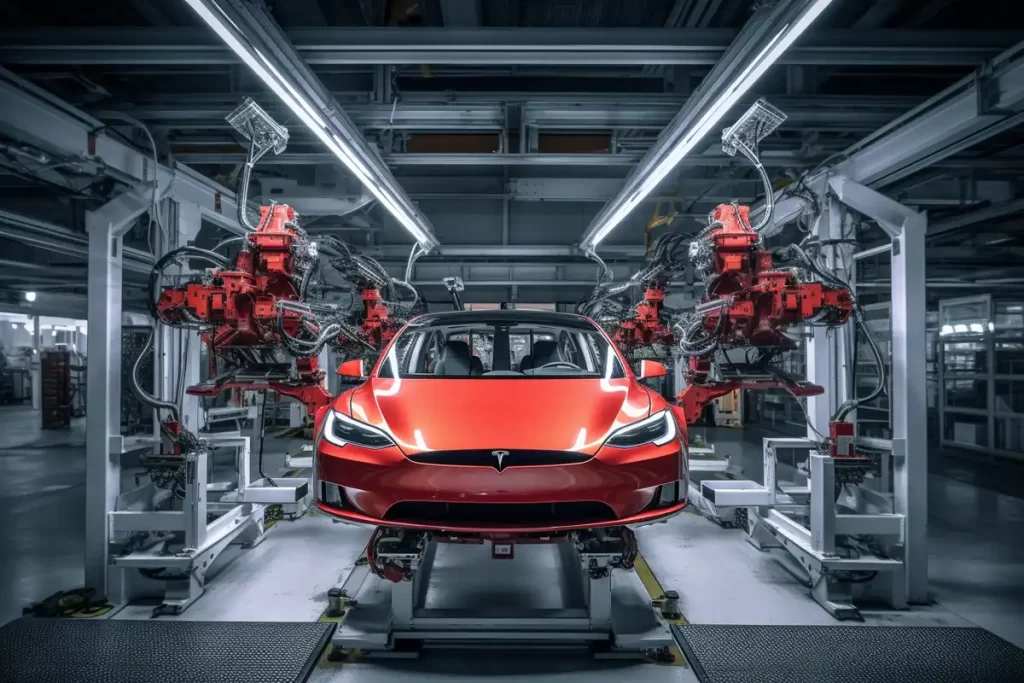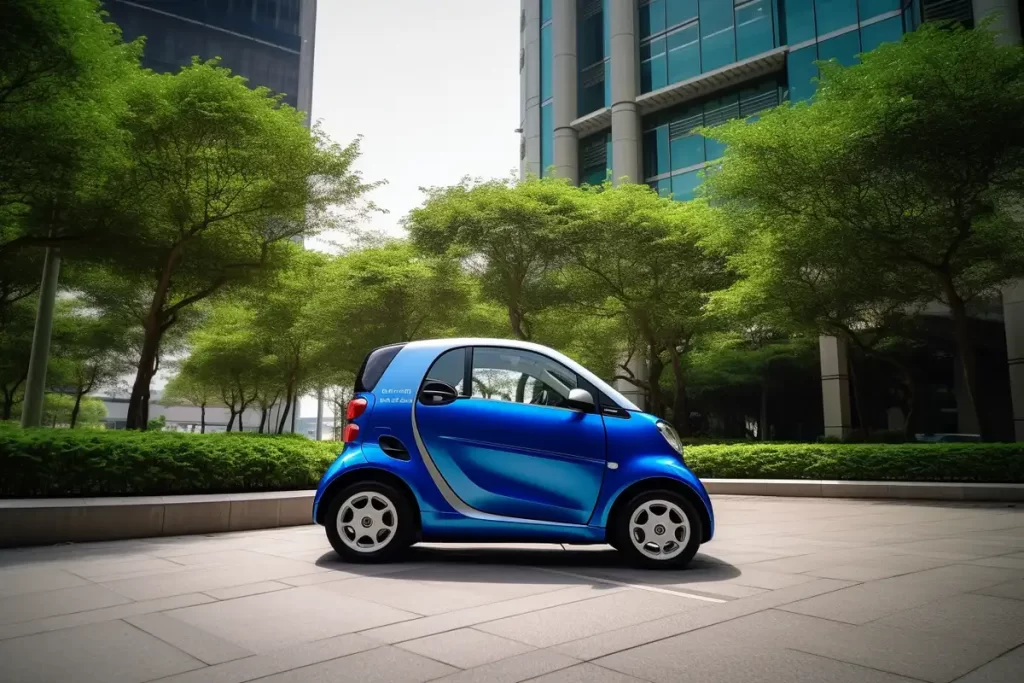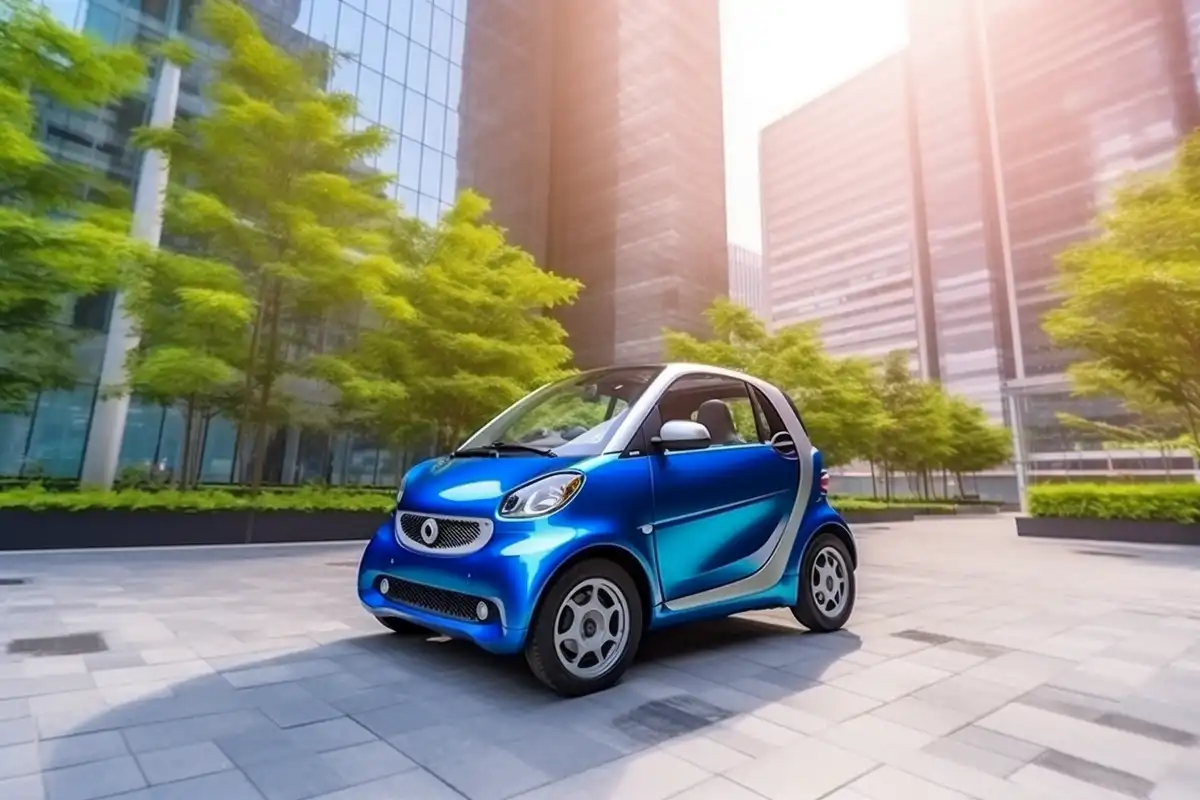The transportation sector plays a crucial role in the global effort to reduce greenhouse gas emissions and achieve a more sustainable future. Electric vehicles (EVs) have emerged as a promising solution, but do they truly save energy? In this article, we’ll explore the energy efficiency of electric cars and discuss the broader implications for sustainability.
The overall energy consumption of electric vehicles throughout their life-cycle is significantly lower than that of conventional gasoline and diesel vehicles. This energy-saving advantage is further amplified when using green electricity, making electric vehicles an essential component in decreasing the transportation sector’s energy use and mitigating its climate impact.
Understanding Electric Vehicles
Electric vehicles are powered by an electric motor rather than a traditional internal combustion engine. They store energy in rechargeable batteries and can be charged from the grid or through renewable energy sources like solar panels. There are also fuel cell electric vehicles that use hydrogen fuel cells to generate electricity.
Energy Efficiency of Electric Vehicles
Less Energy Loss
One of the key benefits of electric vehicles is their energy efficiency. Electric motors are generally more efficient than internal combustion engines, converting around 90-95% of the electrical energy stored in the battery into mechanical energy [1]. In contrast, internal combustion engines only convert around 20-30% of the energy stored in gasoline into mechanical energy, with the rest lost as heat.
Regenerative Braking
Electric vehicles also feature regenerative braking systems, which capture kinetic energy during braking and convert it back into electrical energy [2]. This energy is then stored in the battery for later use, further improving overall efficiency.
Lower Emissions
Electric vehicles produce zero tailpipe emissions, which is a significant advantage when considering the energy used to extract, transport, and refine fossil fuels [3]. Additionally, the electricity used to charge electric vehicles can be generated from renewable sources, reducing the carbon footprint of transportation.
Factors Affecting Energy Savings
While electric vehicles are generally more energy-efficient than their gasoline counterparts, there are several factors that can affect the actual energy savings achieved:
- Electricity Source: The energy savings of electric vehicles depend on the source of the electricity used to charge them. Charging from renewable sources like wind or solar will result in greater energy savings than charging from fossil fuels. To maximize energy savings, consider home solar installations or purchasing green energy plans from your utility provider.
- Battery Production: The production of EV batteries can be energy-intensive, leading to a larger carbon footprint for electric vehicles than traditional cars. However, advancements in battery technology and recycling initiatives are helping to reduce the environmental impact of battery production [4].
- Vehicle Lifecycle: The energy savings achieved by electric vehicles also depend on their lifecycle. As electric vehicles age, battery performance may degrade, reducing energy efficiency [5]. However, regular maintenance and eventual battery replacement can help maintain energy savings over the vehicle’s life.
The Bigger Picture: Sustainable Transportation
While electric vehicles can offer significant energy savings, it’s essential to consider the broader context of sustainable transportation. Reducing the overall number of vehicles on the road, promoting public transportation, and encouraging active transportation options like walking or cycling can also contribute to energy savings and a more sustainable future.
Electric vehicles can save energy and contribute to a more sustainable transportation sector. By choosing to drive an electric vehicle, you can help reduce greenhouse gas emissions, decrease reliance on fossil fuels, and promote a cleaner, greener future. However, it’s essential to consider other aspects of sustainable transportation and make conscious choices to reduce our impact on the planet.
Energy Consumption in Electric Vehicle Manufacturing
The manufacturing process of electric vehicles and their components can be energy-intensive, which has implications for the overall energy savings achieved by these vehicles. In this section, we will discuss the energy consumption associated with producing electric vehicles, batteries, and other critical components.

Electric Vehicle Manufacturing
The production of electric vehicles requires a considerable amount of energy, primarily due to the materials and processes involved. While the assembly of the vehicle itself is somewhat similar to that of traditional internal combustion engine (ICE) vehicles, the production of components unique to electric vehicles, such as batteries and electric motors, can be more energy-intensive [6].
However, it is essential to note that improvements in manufacturing processes and economies of scale are continually reducing the energy required to produce electric vehicles. As the electric vehicle market continues to grow and mature, we can expect further reductions in the energy consumption associated with manufacturing.
Battery Production
One of the most significant factors affecting the energy consumption of electric vehicle manufacturing is the production of the battery. The extraction, processing, and transportation of raw materials such as lithium, cobalt, and nickel can be energy-intensive, leading to a larger carbon footprint for electric vehicles compared to traditional ICE vehicles [7].
However, several initiatives are working to reduce the environmental impact of battery production. For instance, there are ongoing efforts to develop more sustainable mining practices, improve battery recycling programs, and create innovative battery technologies that require fewer rare earth materials. As these initiatives gain traction, the energy consumption associated with battery production is expected to decrease.
Electric Motor and Power Electronics Production
The production of electric motors and power electronics components also requires energy, though the process is generally less energy-intensive than battery production. However, it is worth noting that the production of rare earth magnets, which are used in some electric motors, can be energy-intensive and environmentally harmful. Efforts are underway to develop alternative motor technologies that do not require rare earth magnets, which could further reduce the energy consumption associated with electric vehicle manufacturing.
Balancing Energy Consumption with Lifetime Savings
Although the manufacturing process of electric vehicles and their components can be energy-intensive, it is crucial to consider the potential energy savings over the vehicle’s entire lifecycle. As discussed earlier, electric vehicles are generally more energy-efficient than ICE vehicles and produce zero tailpipe emissions. When the energy consumption associated with manufacturing is balanced against the potential energy savings during the vehicle’s use phase, electric vehicles can still offer a more sustainable transportation solution [8].
In conclusion, it is essential to recognize the energy consumption associated with electric vehicle manufacturing and continue to explore ways to reduce the environmental impact of producing these vehicles. By investing in research and development, implementing sustainable manufacturing practices, and supporting recycling initiatives, we can help ensure that electric vehicles contribute to a cleaner, greener, and more energy-efficient future.
Comparing Total Life-Cycle Emissions of BEVs
While electric vehicles may have higher production emissions, their overall life-cycle emissions are significantly lower than those of conventional gasoline and diesel vehicles. This advantage becomes even more pronounced when using green electricity, making electric vehicles a crucial part of the solution for reducing the transportation sector’s climate impact. So, if you’re considering a new vehicle, it’s time to seriously consider going electric!
While it’s true that Battery Electric Vehicles (BEVs) come with a higher initial environmental cost due to their production emissions, this is only part of the story. For example, a Tesla Model 3 Standard Plus has additional production emissions equivalent to a Volkswagen Passat 2.0 TSI’s driving emissions after 18,000 km [9]. However, this upfront cost is more than made up for over the vehicle’s lifetime.
When it comes to total life-cycle emissions, conventional gasoline and diesel vehicles are the worst offenders, far exceeding the emissions of vehicles powered by other available energy resources. By charging with green electricity, plug-in hybrid electric vehicles and fully electric vehicles can reduce total life-cycle emissions by an impressive 73% and 89%, respectively.
Alternative energy sources like biogas can also make a significant impact, with biogas-powered vehicles reducing life-cycle emissions by 81% [10]. Fuel cell vehicles using commercially available gray hydrogen can achieve a 60% reduction in GHG emissions, comparable to electric vehicles charged with conventional electricity.

CO2 Emissions of BEVs in Different Countries
The life-cycle CO2 emissions savings of BEVs produced in 2020 and used for 250,000 km can range from 18% to 87% across five different countries [11]. The emissions breakeven point-the point at which BEVs and ICE vehicles have the same emissions-varies significantly depending on the country. In France, the breakeven point occurs at just 25,000 km, while in China, it takes 153,000 km. The good news is that by 2030, the emissions breakeven point will happen earlier for all countries.
One important factor to consider when assessing the environmental impact of BEVs is the location of battery cell production and material refining. This is because CO2 emissions from battery manufacturing in China are 60% to 85% higher than those in Europe and the U.S. The emissions gap is expected to increase even further by 2030.
As the electricity system continues to decarbonize more quickly than combustion engine technology improves, the gap between BEV and ICE vehicle emissions will only grow larger. What does this all mean for the future of transportation? As the electricity grid becomes cleaner, the energy savings and environmental benefits of electric vehicles will become even more significant. This underscores the importance of embracing electric vehicles as a key strategy for reducing the transportation sector’s impact on the environment. So, if you’re considering a new vehicle, remember that the future is looking bright for electric cars!
Frequently Asked Questions About Electric Vehicles
In this section, we’ll answer some common questions about electric vehicles, including energy consumption, charging, efficiency, and the advantages and disadvantages of driving an electric car.
Do electric cars use a lot of energy?
Electric cars tend to use less energy than traditional gasoline-powered vehicles. This is mainly due to the higher efficiency of electric motors, which can convert around 90-95% of the electrical energy stored in the battery into mechanical energy. In comparison, internal combustion engines only convert about 20-30% of the energy stored in gasoline into mechanical energy.
How much energy is lost in charging an electric car?
Some energy is inevitably lost during the charging process, primarily due to heat generation and energy conversion inefficiencies. Typically, around 10-15% of the energy is lost during charging, but this can vary depending on factors such as the charger’s efficiency and the ambient temperature.
Are electric cars 100% efficient?
No vehicle is 100% efficient, but electric cars are generally more efficient than their gasoline counterparts. As mentioned earlier, electric motors can convert around 90-95% of the electrical energy stored in the battery into mechanical energy.
What is the power saving of an electric car?
The power saving of an electric car depends on various factors, such as the vehicle’s efficiency, driving conditions, and the energy source used for charging. In general, electric vehicles can save a significant amount of energy compared to traditional gasoline-powered vehicles, contributing to a reduced carbon footprint and lower greenhouse gas emissions.
What is the biggest benefit of electric cars?
The most significant benefit of electric cars is their potential to reduce greenhouse gas emissions and decrease reliance on fossil fuels. They offer higher energy efficiency, lower operating costs, and produce zero tailpipe emissions, which can help mitigate the impacts of climate change and promote a more sustainable future.
What are some disadvantages of an electric vehicle?
Some disadvantages of electric vehicles include:
- Limited driving range compared to gasoline vehicles.
- Longer refueling times due to charging.
- Limited availability of charging infrastructure, particularly in rural areas.
- Higher upfront costs compared to traditional vehicles, although this gap is narrowing.
- The energy-intensive manufacturing process, particularly for batteries.
Do electric cars take forever to charge?
Electric vehicle charging times vary depending on the battery’s capacity, the charger’s power output, and the state of charge. While charging an electric car typically takes longer than refueling a gasoline vehicle, advancements in charging technology have significantly reduced charging times. Fast chargers can replenish a depleted battery to around 80% in 20-30 minutes.
How long does an electric car last after charging?
The driving range of an electric car after charging depends on factors such as the battery capacity, vehicle efficiency, and driving conditions. Most modern electric vehicles offer a range of 200-300 miles on a single charge, with some high-end models providing even greater range.
How much does an electric car battery drain per day?
Electric vehicle batteries can experience a small amount of self-discharge when not in use, but this is generally negligible. Most electric vehicles can be left unused for several weeks without experiencing significant battery drain.
What is the biggest problem with electric cars?
One of the most significant challenges facing electric cars is the limited charging infrastructure, particularly in rural areas. While the availability of charging stations is improving, further investment in charging infrastructure is needed to support the widespread adoption of electric vehicles.
How long do electric cars last?
The lifespan of an electric vehicle depends on factors such as battery quality, driving habits, and maintenance. With proper care, electric cars can last as long as their gasoline counterparts, typically around 150,000 to 200,000 miles [12]. Batteries may degrade over time, but most manufacturers offer warranties that cover battery capacity for 8-10 years or around 100,000 miles.
Which car is more efficient: petrol or electric?
Electric cars are generally more efficient than petrol (gasoline) vehicles. As mentioned earlier, electric motors can convert around 90-95% of the electrical energy stored in the battery into mechanical energy, whereas internal combustion engines only convert about 20-30% of the energy stored in gasoline. This increased efficiency leads to lower energy consumption and reduced greenhouse gas emissions for electric vehicles compared to their petrol counterparts.

